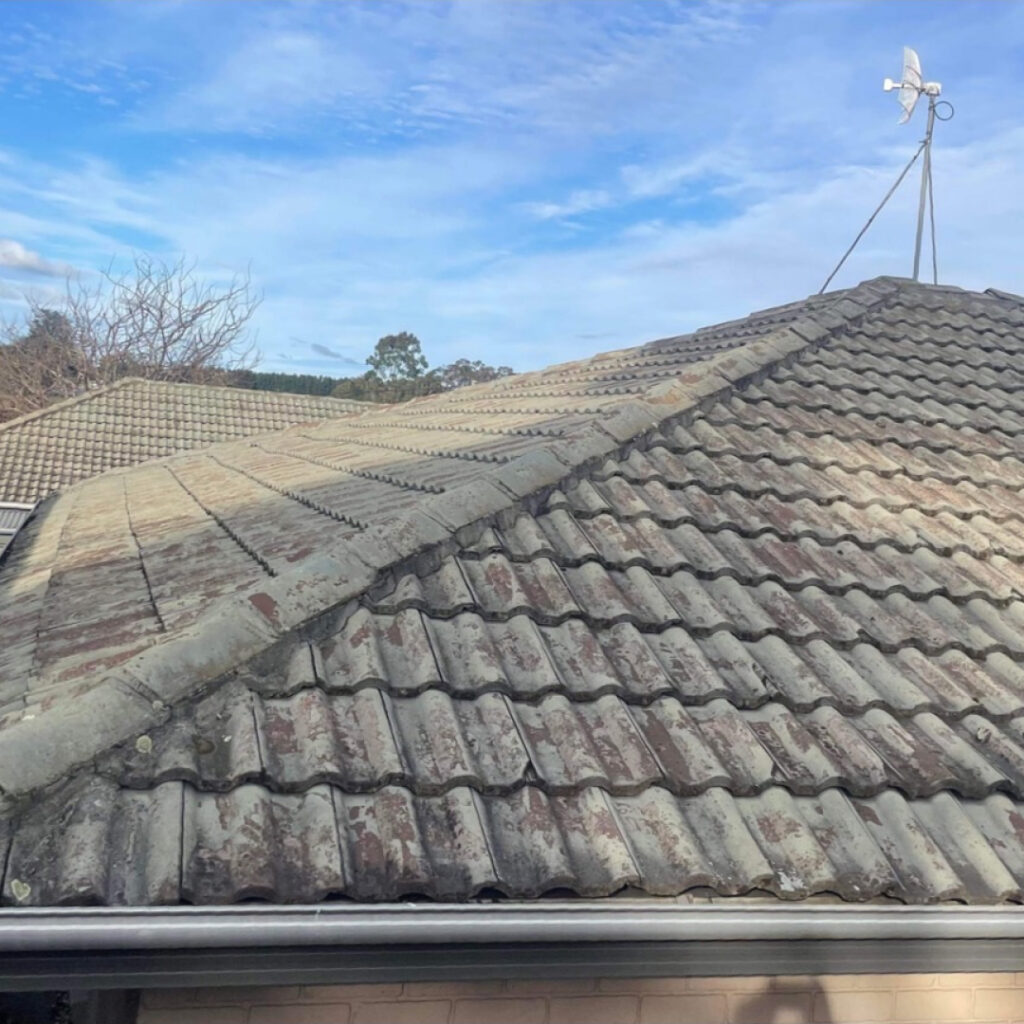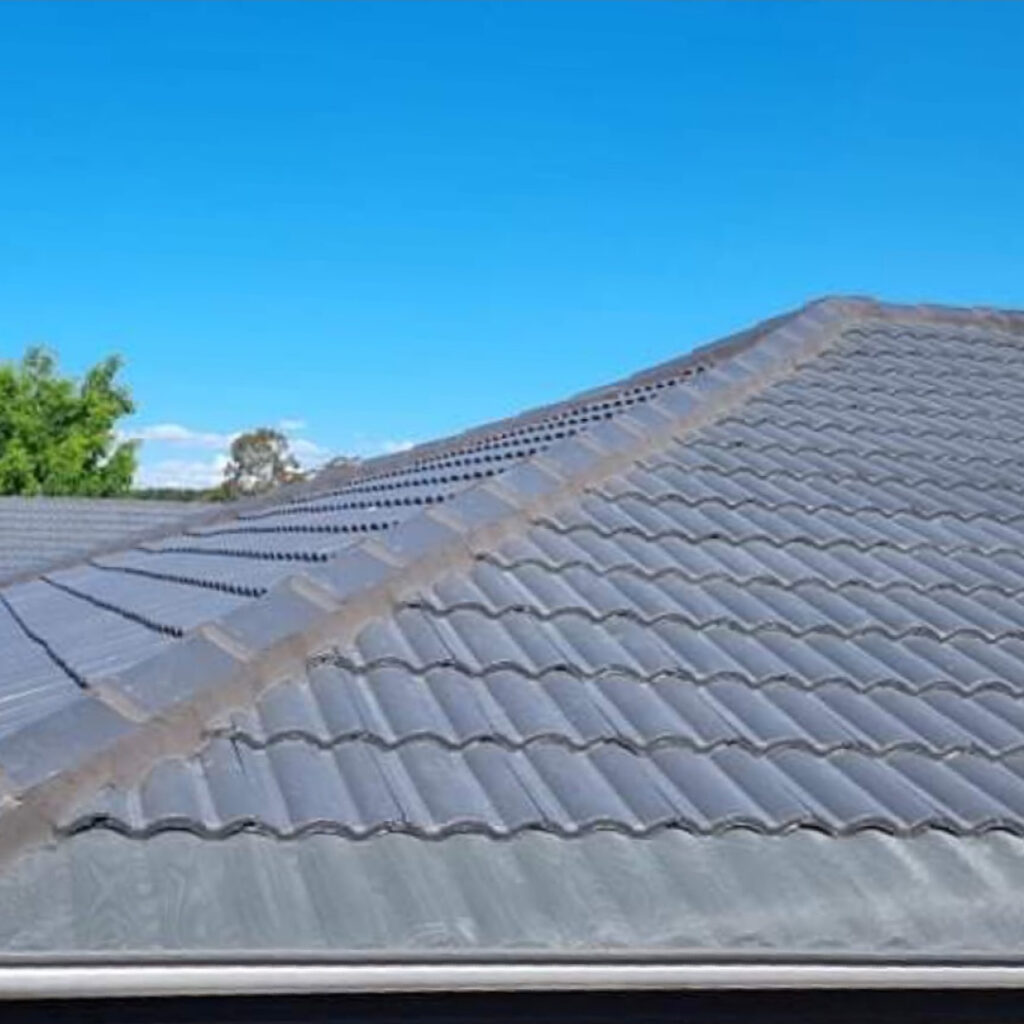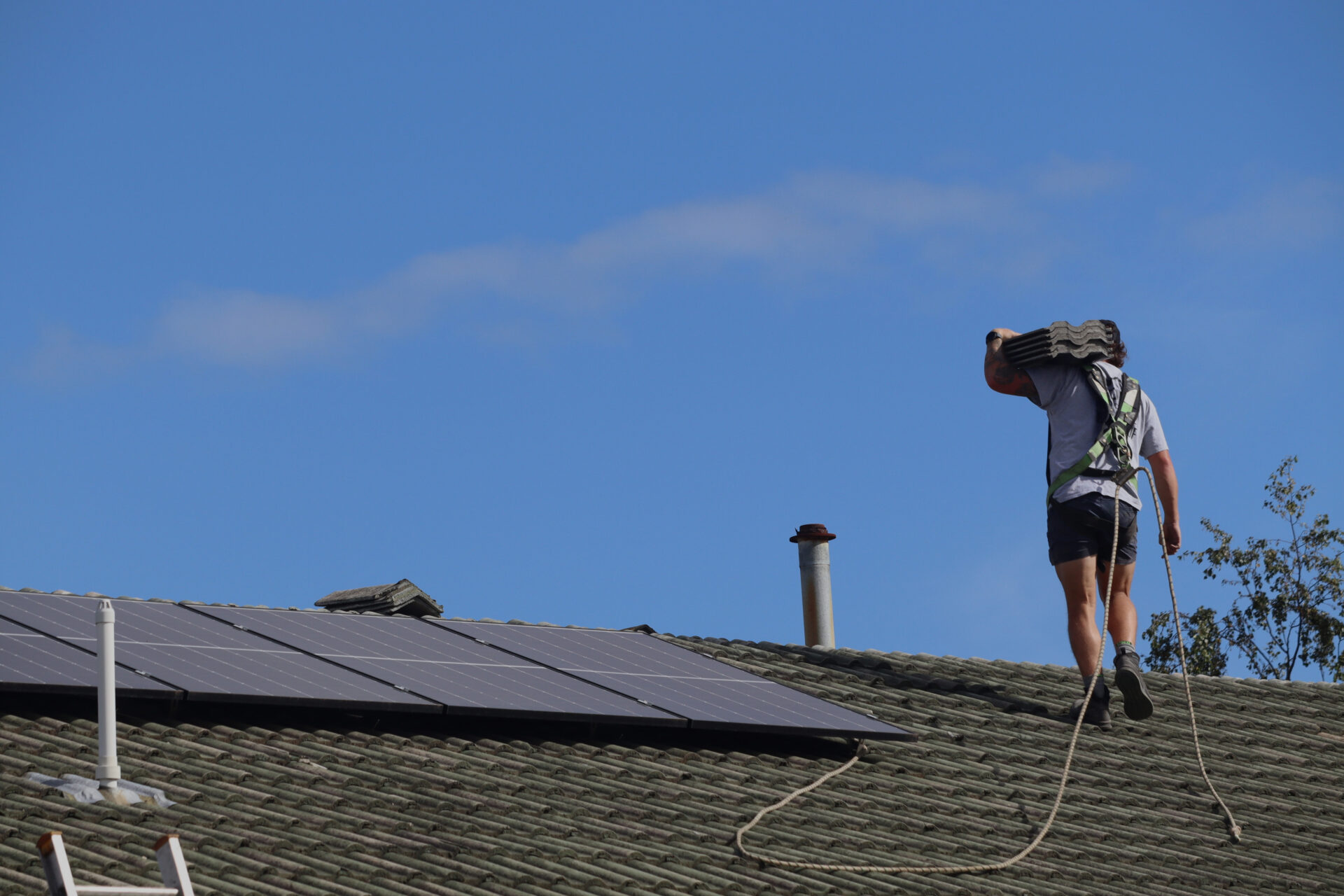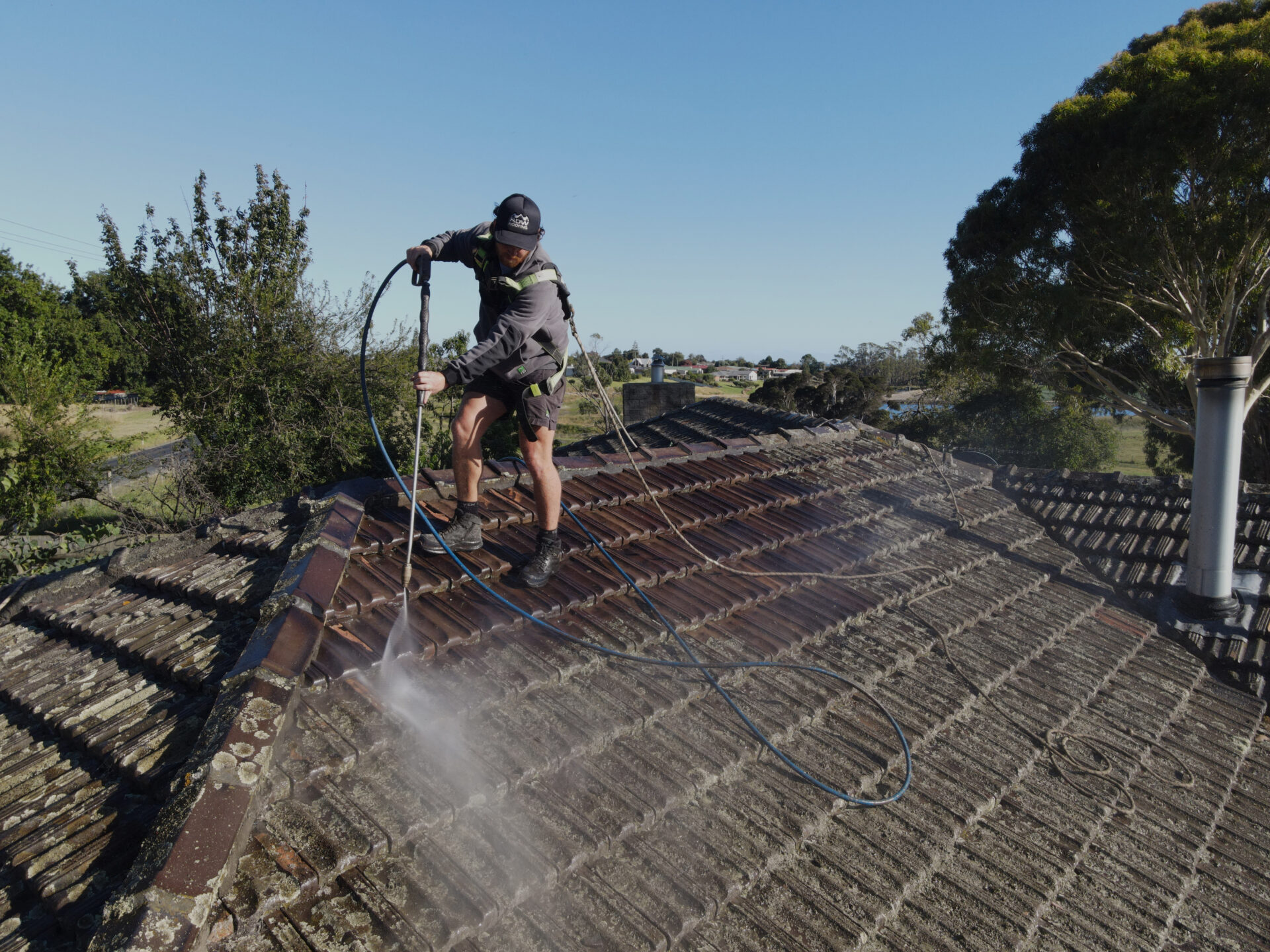A well-maintained roof is a proactive way to protect your home from the elements, improve energy efficiency, and maintain property value. However, wear and tear can take its toll over time, leaving your roof looking lacklustre and unkept.
A roof restoration is the most cost-effective way to breathe new life into your roof while avoiding the hefty investment of a full roof replacement. In this guide, we’ll cover everything you need to know about roof restorations so you can make informed decisions about how to get the most out of your roof.
When Should I Get a Roof Restoration?
If your roof is looking worn, faded, or covered in dirt and moss, then it may be time to start considering a restoration. There’s a range of different signs that your roof could be due for a restoration. Cracked or missing tiles, peeling flashing, and overgrown moss and lichen are all signs of a roof needing maintenance. However, one of the most important signs your home’s roof may be due for restoration is pointing that’s beginning to show signs of deterioration. Cracked or gap-filled pointing means your ridge caps may be at risk of becoming dislodged, which is a leading reason for leaks.
How Can I Make My Roof Look New Again?
A roof restoration is a simple and affordable way to make your look close to brand new without having to fork out a lot of wasted cash for a re-roofing. A restoration typically involves cleaning, repairing, and resealing your roof to restore its appearance and function. A professional roof restoration will:
- Treat your roof with high-quality cleaning agents to remove built-up dirt, debris, and moss. This will be done via a high-pressure cleaning system that’s specifically designed for roof tiles.
- Replace cracked or missing tiles as well as deteriorated pointing and bedding. This typically involves completely removing and gently cleaning the underside of your ridge caps before adding them back onto fresh bedding cement.
- Replace loose or damaged flashing, which is essential for preventing water intrusion.
- You also have the option to add a fresh coat of roof paint to finish off your restoration, giving your home a head-turning look.


A properly restored roof can instantly improve curb-side appeal and extend the life of your roof by decades.
Is a Roof Restoration Worth It?
Absolutely. If a licenced roofer recommends a restoration, they’re very likely trying to save you tens of thousands in avoiding a future re-roofing. With countless restorations completed throughout Hobart and Launceston, our expert team has seen the immense value a restoration can bring to homeowners:
- Increase your roof’s lifespan – Restorations can extend the life of your roof by 10-20 years (or more).
- Prevention of costly repairs – Small issues such as cracked or missing tiles are addressed before they become major problems.
- Improved energy efficiency – Keeping your roof in a healthy state can help regulate your home’s internal temperature, reducing energy costs.
- Higher property value – Extensive roof damage is one of the leading causes of failed property inspections, as the investment required for roofing can be massive. Additionally, a well-maintained roof enhances the overall appeal of your home, making it a more attractive option for potential buyers.
Ignoring a deteriorating roof can lead to leaks, mould, and even structural damage, so investing in restoration is a wise investment.
Roof Restoration vs Replacement
Not every roof problem requires a complete replacement. A roof restoration is ideal if your roof is structurally sound but showing signs of age or minor damage. However, if your roof has extensive damage or major leaks or is nearing the end of its lifespan, replacement may be necessary.
When to Choose a Roof Restoration:
- Your roof is faded, dirty, or growing moss.
- You have minor leaks or a few damaged tiles.
- The structure is still in good condition.
- A trusted and licenced roofer has recommended investing in a restoration.
When to Choose a Roof Replacement:
- Your roof is sagging or structurally compromised.
- You have widespread leaks or severe tile damage.
- The roof is beyond its expected lifespan and constantly needs repairs.
A Few Common FAQs About Roof Restorations
What Does a Roof Restoration Include?
A complete roof restoration is a multi-step process designed to restore your roof’s appearance and functionality. It typically includes:
- Roof Inspection – A professional assessment to identify existing damage.
- High-Pressure Cleaning – Removes moss, lichen, dirt, and grime.
- Tile and Ridge Cap Repairs – Replacing broken tiles, re-bedding, and re-pointing your roof ridge caps.
- Replacing Damaged Flashing – Pieces of sheet metal that adhere to the sides of vents and chimneys. Flashing is also found within the valleys of your roof.
- Application of Protective Coatings – Sealing, painting, or applying heat-reflective coatings for longevity.
The exact process may vary depending on the type of roof and its condition.
How Long Does a Roof Restoration Last?
A quality roof restoration can last between 10 and 20 years. This can vary depending on the age of your roof, the materials used, and the weather conditions in your area. For example, particularly windy regions can accelerate roof damage. Additionally, regular maintenance and inspections are the best way to prolong the effectiveness of your restoration.
Does Roof Restoration Fix Leaks?
Yes, a roof restoration can fix minor leaks caused by cracked tiles, deteriorated bedding, or worn-out sealant. However, in rare circumstances, if the damage is extensive, a restoration alone may not be enough, and an expert roofer may recommend a roof replacement instead.
Can I Restore My Own Roof?
While minor maintenance like gutter cleaning is manageable, a full roof restoration is not a DIY job. Here’s why:
- Safety risks – Working at heights without proper training and safety gear can be dangerous.
- Insurance concerns – DIY repairs may void your home insurance policy.
- Lack of expertise – Professional roofers know how to diagnose and repair issues properly, ensuring a long-lasting result.
How often should I have my roof inspected?
It’s recommended that your roof be inspected every few years; however, it’s best to get an inspection as soon as possible after major weather events (such as high winds or hail) so you can catch potential damage before a major storm.
Will a roof restoration help with storm damage?
A roof restoration will always include repairs for storm damage, such as cracked tiles and deteriorated sealants. However, severe storm damage may require extensive repairs or a complete replacement.
Can a roof restoration improve energy efficiency?
Yes. Keeping your roof tiles in good shape can keep your home cooler in summer and warmer in the winter, reducing energy bills. Additionally, it prevents water from leaking onto your insulation, which is a common reason for deteriorated, mould-ridden insulation batts.
Will a roof restoration increase property value?
A well-maintained roof enhances your home’s overall aesthetic appeal and market value, making it a worthwhile investment if you plan to sell.
Need a Roof Restoration? Trust RDW Roofing in Hobart & Launceston
If your roof looks tired, is leaking, or needs professional care, RDW Roofing is here to help. Offering roofing in Hobart and Launceston, our expert team provides high-quality roof restorations, ensuring your home stays protected for years to come. Contact us today for an inspection and quote!


